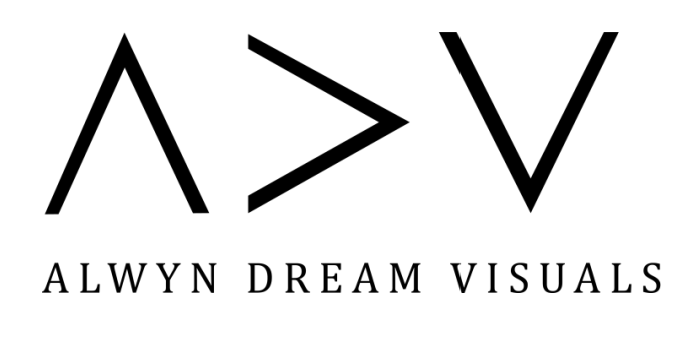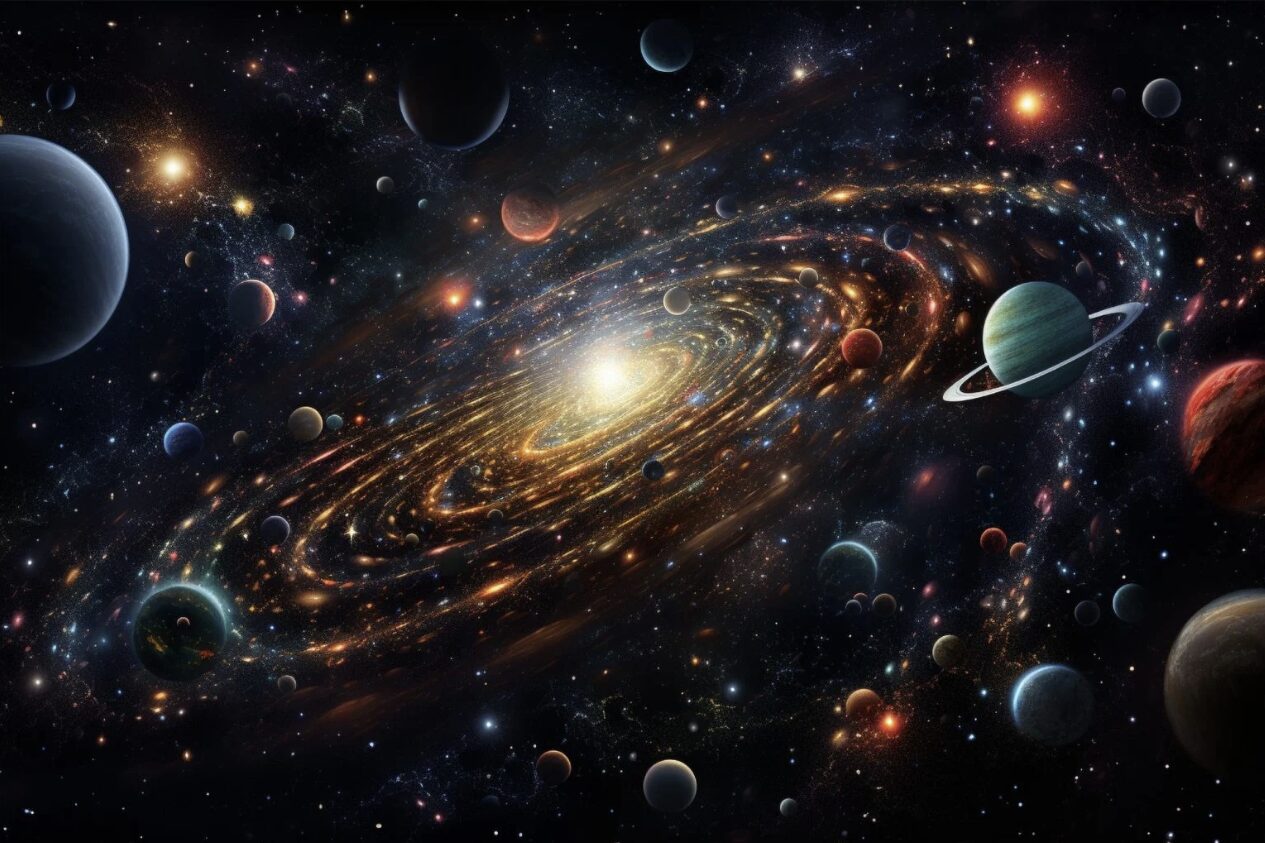Reflection After the Midterm
After the Midterm, I got some feedback for improving my midterm:
-Start finding appropriate music(solved)
-Put some details on it such as stars, planets, and creatures
-Export into video
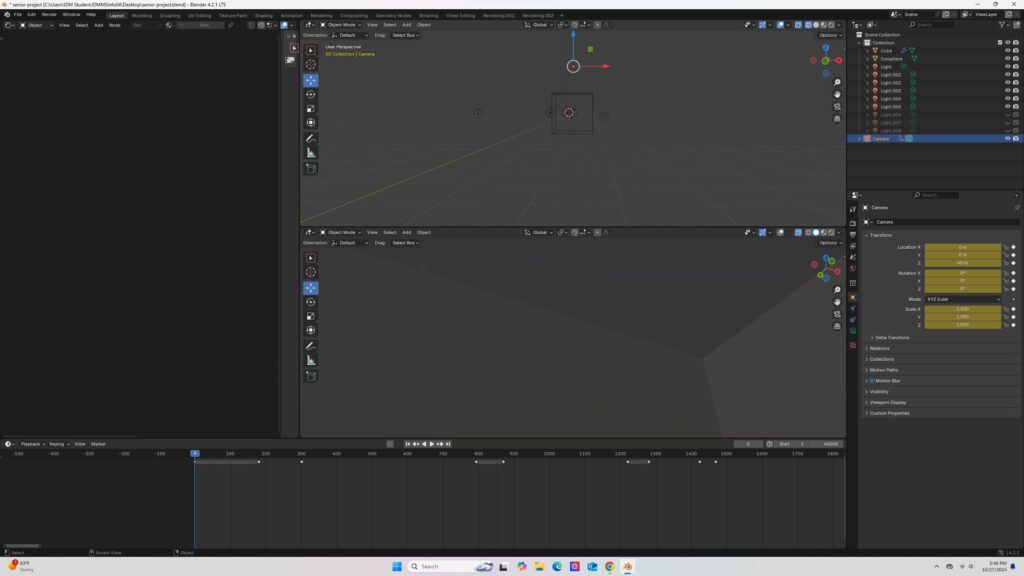
To make a 360 video, I first need to set a camera path. As outlined in the storyboard, the camera starts outside the cosmic, enters to explore the world I’ve created inside, and then exits. For users to enjoy my content in an immersive way, the camera movement needs to be smooth, with carefully controlled pacing—adding intensity when needed and pulling back when it’s not. For example, the camera moves quickly when entering the cube, allowing for a slower, exploratory pace inside, and then speeds up again upon exiting. The image above captures this process.
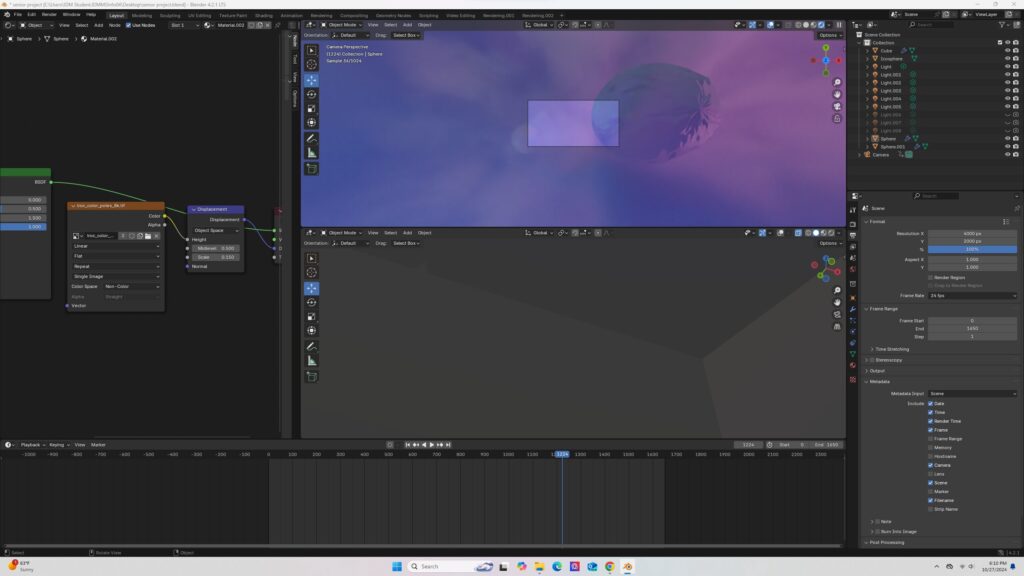
The image above captures the process of adding details by incorporating the moon. I created and placed a moon (planet), but its appearance is altered by the various colors of the objects around it, making it look like a different form of the moon than we’re familiar with. While this could work naturally within the scene, it raises the question of whether the moon should be portrayed as we know it. If I want a more “moon-like” appearance, I’ll need to figure out ways to prevent it from being affected by the surrounding light.
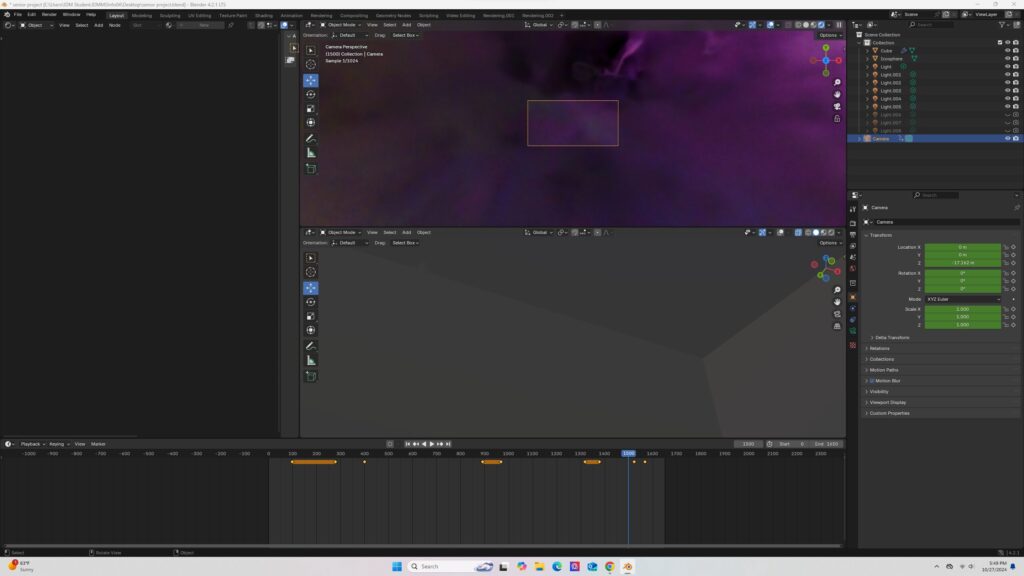
This image shows the process of setting and testing the camera path. Due to the large scale, computer struggled to handle the full setup, limiting my testing options. To work around this, I adjusted the settings to a transparent view, allowing me to test if the camera path moves smoothly, captures the desired feel, and ensures user comfort.
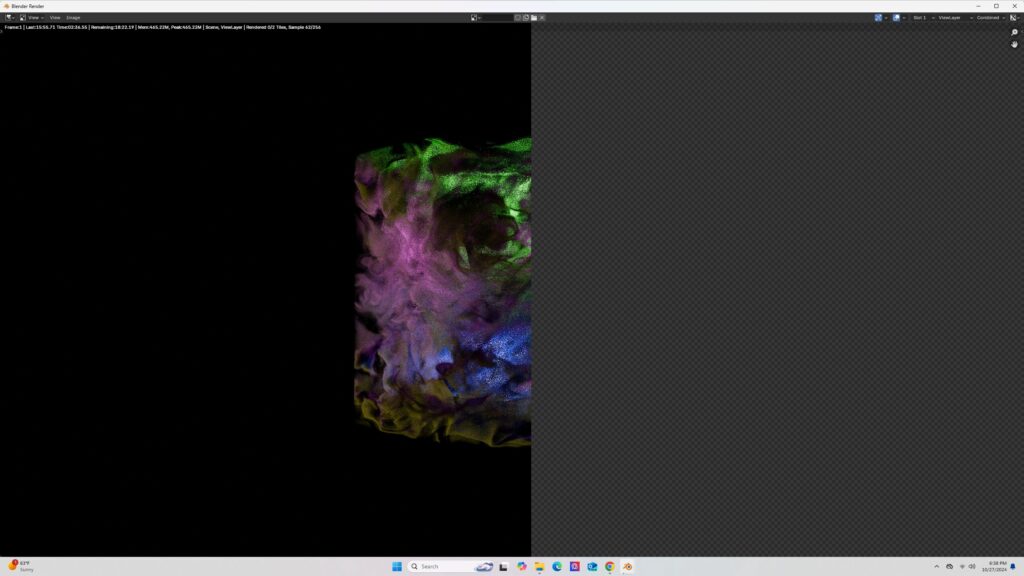
To export a 360-degree video, I first need to render each frame along the camera path I set up. Given the large scale of the project and the need to render each frame as an individual image, this process is extremely time-consuming. So, I set the rendering to run overnight and check it in the morning, repeating the cycle. Once the frames are fully rendered, I should compile them into a video, add the necessary metadata, and upload the content to platforms like YouTube or Facebook, and finally, If successful, the main framework will be complete.
The next goal is to check if the rendering was successful, ensure the re-exporting as a video works smoothly, and then add objects or ideas to further enrich the space.
